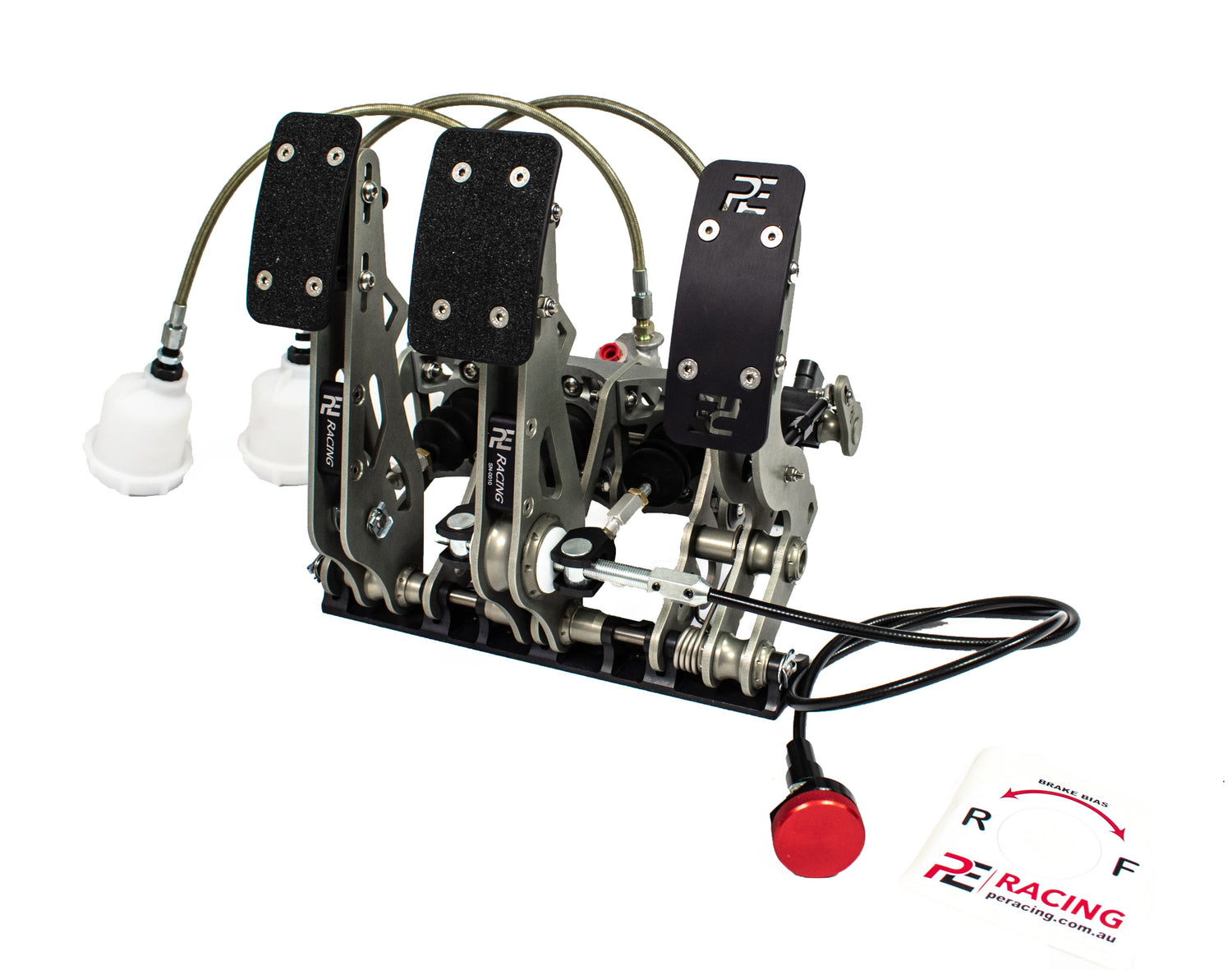We often get asked why our Pedal Assemblies use such a small Pedal Ratio, and how can a small pedal ratio work (as others are typically at 5:1 & 8:1 etc)
Pedal ratio is fundamentally only one element of the mechanical advantage in a braking system, the other element not considered is the hydraulic ratio.
This is easiest described as being lever length on a pivot/fulcrum to multiply an input force. The force increase due to leverage (mechanical advantage) but has another effect which is reduced distance at the output point.
So put simply if you used a 10:1 lever to lift a heavy object, the amount of movement at the input end is 10 times more than the output end. This in essence is how your energy is transformed, as force & distance are individually reliant by the leverage ratio.
So back to pedals & pedal ratio, our PE Racing pedal assemblies have a pedal ratio of 3.5 to 4.5:1.
Many believe that pedal ratio is the ultimate factor that determines your increased ability for apply braking loads. Unfortunately when applying a brake load, you do not magically have more power from pedal ratio, you can only get out what power you put in (or simplified work in=work out or energy in= energy out, so no magical free energy is available).
So that being said, there’s more to it right? The pedal ratio is only one part of the influencing factors. The other factor is hydraulic advantage (being Master Cylinder bore area versus brake caliper piston area)
This hydraulic ratio is better understood when using a hydraulic jack to raise a heavy object like a vehicle.
The force & stroke you apply to the jacks handle transfers that force via a small bore & stroke to a larger cylinder. The larger cylinder extends slowly, while you repeatedly apply strokes to the lever. If you calculated your force input & travel & how many pumps you put in, you will find that this is exactly why you cannot lift the vehicle much with each single pump. What’s happening is your energy is being transformed from a large distance with small force input to a smaller distance with much higher force output (and eventually your combined efforts lift the vehicle).
Below is a comparison of 4:1 & 8:1 pedal ratios, with equivalent pedal travel & pedal force, the outcomes will be very interesting to those who don't mind doing a bit of math.


So with a braking system, integrating the Master Cylinder area & stroke combination directly affects your Caliper outputs due to Pistons area ratio. This is really a hydraulic advantage coupled with a mechanical advantage. Once combined the true outcomes can be predicted for volume, pressure & force.


